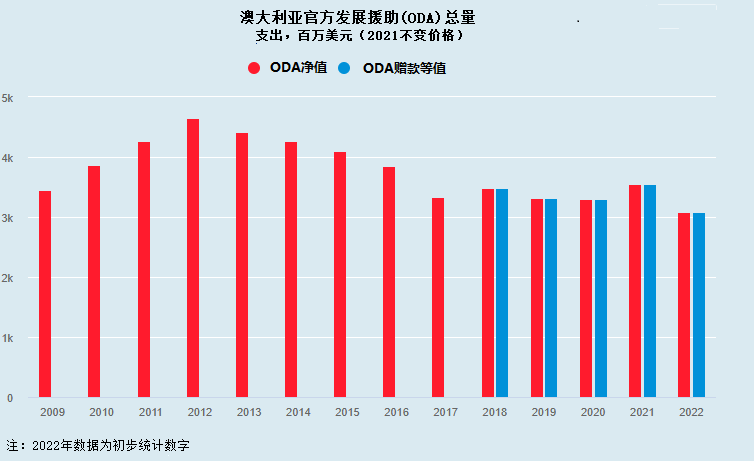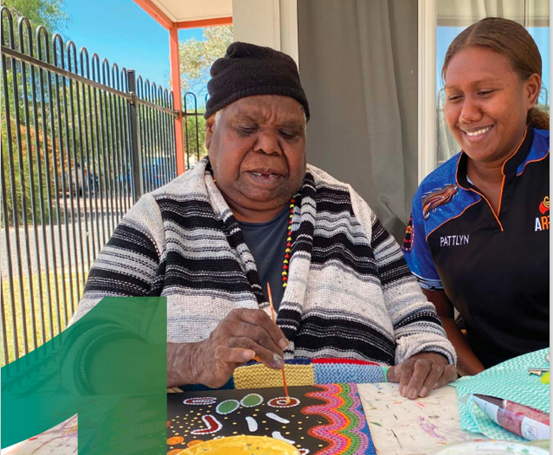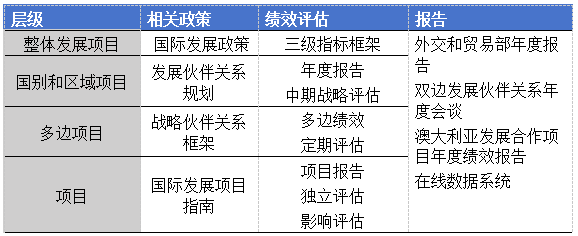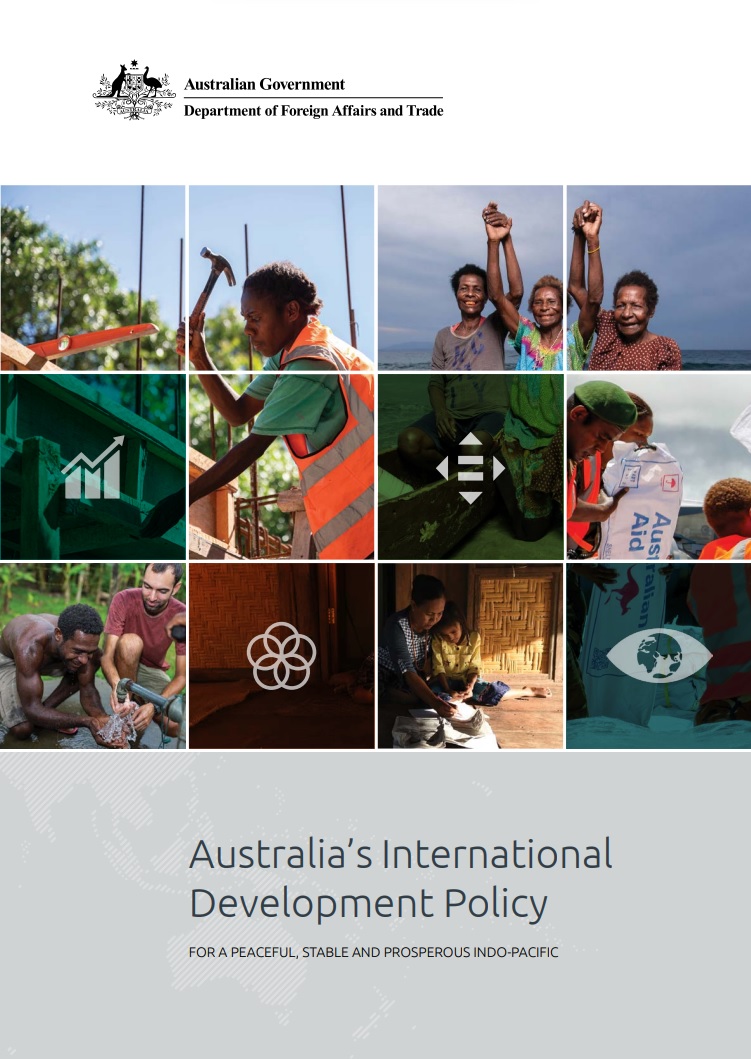Author: Sun Weiqing
In August this year, Australia released a new international development policy aimed at promoting the establishment of a "peaceful, stable and prosperous Indo-Pacific region." The new policy emphasizes the establishment of partnerships based on respect and supports Australia's cooperation with developing countries to jointly address global challenges.
Total words2365About6In August this year, Australia released a new international development policy aimed at promoting the establishment of a "peaceful, stable and prosperous Indo-Pacific region." This is the first time Australia has released a new international development policy in the past decade. The new policy seeks to build partnerships based on respect, support partners in building effective and responsible countries, promote the development of countries and communities, strengthen their ability to withstand external pressures and shocks, and take collective action to respond to global challenges and promote poverty reduction. , to provide support for cooperation between Australia and developing countries. Australia also released its development policy "Performance and Delivery Framework" and "Development Financing Review" at the same time.
What are the goals and priorities of the new policy?
The new policy recognizes that climate change, global economic uncertainty, demographic changes and technological change constitute an extremely challenging strategic environment. The new policy states that Australia’s development cooperation projects aim to build a peaceful, stable and prosperous Indo-Pacific region. Sustainable development and poverty reduction are critical to achieving this goal. As an important foreign policy tool, development cooperation is critical to building regional resilience. The new policy specifically promises to focus on climate change, social inclusion, locally led development and gender equality. In addition, for the first time, the policy also proposes that valuing Aboriginal leadership is critical to development.
Australian official development assistance
Preliminary data shows that in 2022, Australia's official development assistance totaled US$3 billion, accounting for 0.19% of gross national income (GNI), ranking 14th and 20th among members of the Development Assistance Committee of the Organization for Economic Cooperation (OECD). seven.
Australia's development cooperation focuses on the Indo-Pacific region. In 2021, Australia's bilateral official development assistance of 74.4% was carried out through country planning, mainly concentrated in small island developing countries and the Pacific region, while the average proportion of DAC countries through country planning was only 45.2%, highlighting Australia's bilateral assistance planning emphasis. Additionally, Australia ranked seventh among DAC members in spending on ending violence against women in 2020-21.
In 2021, the OECD DAC affirmed Australia's "partner driven" approach and its approach to integrating development policy with foreign and trade policy in its mid-term review. The review also encourages Australia to increase official development assistance, align official development assistance policy and performance frameworks with the Sustainable Development Goals, and strengthen staff capacity.
The Australian Department of Foreign Affairs and Trade (DFAT) has overall responsibility for development cooperation policy and the official development assistance budget. Development-related ministries and embassies abroad are responsible for managing national and regional development projects. The DFAT Development Program Committee has all-round oversight responsibilities for Australian development assistance, promotes evaluation quality, and ensures that evaluation results provide the basis for policy and project decisions.
What are the highlights of the new policy?
First, the government continues to increase investment in international development.Over the past five years, Australia's total official development assistance has remained at around US$3 billion. Currently, Australia is a medium-sized donor country in the OECD along with countries such as Poland, South Korea and Denmark. The new policy states: In the next five years, Australia will increase its official development assistance budget by AUD 1.7 billion, and the scale of development cooperation will continue to grow, so that Australia's development projects can reduce poverty, economic growth, health care, and infrastructure construction. , climate change and gender equality.

(OECD/Figure)
The second is to establish a “Civil Society Partnership Fund” to support local-led development.Australia will increase investment to support locally-led development, create jobs and economic opportunities for recipient countries, and build mutually respectful partnerships. Australia will co-design a "Civil Society Partnership Fund" with civil society organizations in the country and the Indo-Pacific region to support local leaders and relevant local community organizations to promote local development.
The third is to develop a new humanitarian strategy to provide assistance to people affected by the crisis.By coordinating humanitarian, development, peacebuilding, diplomatic and security efforts, we focus on the root causes of crises and develop lasting solutions. The new humanitarian strategy will ensure Australia has an "adaptive, responsive and effective" framework to help people affected by humanitarian crises and build resilience.
The fourth is to make gender equality and climate action the long-term goals of development projects.The new policy requires that from the 2024/25 financial year, at least 50% of new projects with a budget of more than A$3 million (approximately US$2 million) should be linked to climate change targets, and by the 2028/29 financial year, at least 80% Project activities should include climate change objectives to ensure that development assistance effectively addresses the impacts of climate change. Projects of this scale also need to include gender equality targets to strengthen support for gender equality. The new policy reiterates that it should ensure that 80%’s projects are linked to the goal of effectively addressing gender equality issues.
Fifth, it is based on a new performance and implementation framework.The new policy will guide the planning, design and implementation of development assistance projects based on a new performance and implementation framework. The framework includes four major elements: national and regional development partnership plans (Development Partnership Plans), three-tier set of performance indicators (Three-tier set of performance indicators), multilateral organization strategic partnership framework and global project implementation framework (Strategic Partnership Frameworks with multilateral organizations and implementation frameworks for global programs) and investment level monitoring and evaluation systems.

(Pacific Labor Mobility/Photo)
How will the new policy be implemented?
The new policy points out that the focus of Australia’s development cooperation remains in the Indo-Pacific region, especially the Pacific, Southeast Asia and South Asia. Development projects should meet the key needs of partners and contribute to Australia’s national interests and the long-term vision of the host country. To this end, Australia will support its national partners to advance their own development, increase the resilience of countries and communities to external pressures and shocks, and take collective action in addressing global challenges in their regions.
Development cooperation projects will be implemented based on the principles of quality, accountability and partner priorities. Specifically, the implementation of development cooperation projects will focus on the following contents: First, closely consult with multiple stakeholders and incorporate diverse perspectives to ensure that development cooperation projects focus on areas where Australia can have the greatest impact. The second is to measure development projects through corresponding indicators and be accountable to new commitments and taxpayers through open and transparent operations and effective use of resources. The third is to work with partners to formulate country and regional plans to translate common priorities into actions.
How will the new policy enhance assessment efforts?
The Performance and Implementation Framework, released to coincide with the new development cooperation policy, aims to drive key reforms and increase transparency and accountability in development projects. Australia will further strengthen its approach to national and regional planning through in-depth consultation with partners and improved monitoring, evaluation and learning. In addition, the Performance and Implementation Framework proposes to increase the number of development projects to be evaluated on the basis of the long-term evaluation plan, pilot new methods such as real-time evaluation to better understand project implementation, and conduct impact assessments after the completion of major investment projects .
The new framework also states that local experts from developing countries should be included in assessment teams to strengthen commitment to locally led development. In the future, Australia will improve the application of evaluation results, increase guidance on project decision-making, increase transparency, and strengthen accountability for projects with unclear results or poor performance.
Performance Assessment and Implementation Framework

How have all parties responded to the new development policy?
The Australian Council for International Development (ACFID), which represents Australian NGOs, warmly welcomed the release of the new development policy. The Council considers it significant that development policy recognizes Aboriginal voices, leadership and traditions for the first time.
The Australian think tank Development Intelligence Lab believes that the government's statement of development project goals is better than expected. Past development aid policies often wavered or were vague between “national interests” and “poverty reduction.” The new development cooperation policy clearly states that a peaceful, stable and prosperous Indo-Pacific region is vital to Australia's national interests, and points out that the best way to achieve this goal is to promote sustainable development and reduce poverty.
Save the Children Australia recognizes the new policy’s clear recognition of the risks that poverty, insecurity and inequality pose to communities in the Indo-Pacific, and its commitment to addressing these challenges to achieve regional prosperity and peace. Save the Children sees the new policy as a positive step towards promoting more transparent and accountable development programmes. However, the new policy fails to fully consider children’s rights and perspectives, missing a valuable opportunity to build a vital framework for young people in the region.
References
https://www.dfat.gov.au/sites/default/files/international-development-policy.pdf
https://view.officeapps.live.com/op/view.aspx?src=https%3A%2F%2Fwww.dfat.gov.au%2Fsites%2Fdefault%2Ffiles%2Finternational-development-policy.docx&wdOrigin=BROWSELINK
https://www.dfat.gov.au/sites/default/files/development-finance-review-2023.pdf
Past review
- Japan's Third Revision of Development Cooperation Charter: What Have Been Changed?
- 2024 Budget Proposal Highlights Biden's Foreign Aid Policy Priorities
- Macron's Re-election and the Continuation of Modernizing French Development Cooperation
- Evaluating German Development Cooperation: What's the OECD Development Assistance Committee's Take?
- What does the new UK international development strategy say?
- Global Development Initiative: Dimensions You Need to Think about
- Recapping International Development in 2022

All rights reserved, please indicate the source when citing.

Comment (1)
Situs Slot Gacor| December 21, 2024
Very good info. Lucky me I discovered your website by
accident (stumbleupon). I have book marked it for later!